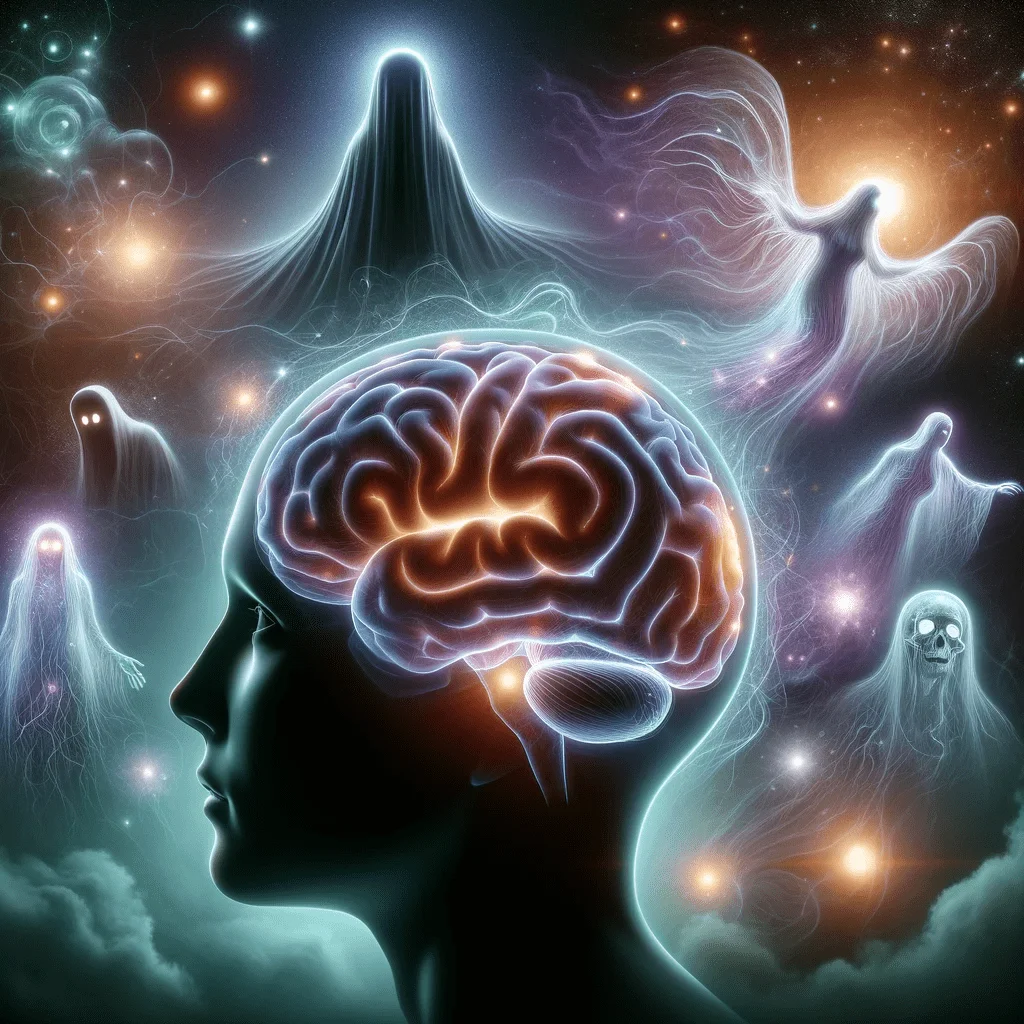Brain’s Role in Paranormal Experiences

In an interview, Professor Garry Nolan discusses intriguing findings related to brain differences in individuals who have reported experiencing paranormal phenomena or encounters with Unidentified Aerial Phenomena (UAPs). He elaborates on several key points:
- MRI Images of Exposed Individuals: Nolan talks about analyzing the brain MRIs of people who have had exposure to UAPs. He found unique patterns in their brain scans that were not typical of the general population.
- Bundle of Nerves and Sensory Perception: He specifically mentions a bundle of nerves at the head of the caudate putamen in the basal ganglia, an area of the brain involved in sensory perception and executive function. This region is crucial for integrating sensory information and setting goals and sub-goals based on environmental cues.
- Overdeveloped Neuronal Structures: In individuals who have encountered UAPs, Nolan observed an overdevelopment in the neuronal structures of this area of the brain. He notes that these individuals are often high-functioning and intellectually gifted, suggesting a correlation between this brain structure and higher cognitive abilities.
- Intuition and Perception: The overdevelopment in this brain region is linked to enhanced intuition and perception. Nolan suggests that this might explain why certain individuals are more likely to perceive or notice phenomena that others do not.
- Inherited Brain Structures: Nolan also points out that these unique brain structures appear to be congenital, meaning individuals are born with them. Furthermore, he observes that these traits tend to run in families, indicating a genetic component.
- Implications for Understanding Paranormal Experiences: These findings suggest that certain brain structures might predispose individuals to experience and perceive paranormal phenomena differently from the general population. It raises the possibility that what is deemed ‘paranormal’ could be a natural, albeit rare, part of human sensory and perceptual capabilities.
Nolan’s observations contribute to an emerging scientific perspective that seeks to understand paranormal experiences through the lens of neurology and genetics. His work implies that such experiences could be grounded in tangible, measurable brain functions and structures.
The caudate and putamen are important structures within the brain, particularly within the basal ganglia, a group of nuclei located deep within the cerebral hemispheres. These structures play crucial roles in a variety of functions, primarily involving motor control, learning, and certain aspects of behavior and emotion. Here’s a more detailed look at each:
- Caudate Nucleus:
- Shape and Location: The caudate nucleus has a long, curved shape and is located near the center of the brain, adjacent to the lateral ventricles.
- Function: It’s involved in various higher brain functions, including learning, memory, and voluntary movement regulation. The caudate nucleus also plays a role in various non-motor functions, such as processing feedback and reward anticipation, which are crucial in habit formation and decision-making.
- Putamen:
- Shape and Location: The putamen is a rounded structure situated at the base of the forebrain. It lies next to the caudate nucleus but is separated from it by a white matter tract called the internal capsule.
- Function: The putamen is primarily involved in regulating movements and influencing various types of learning. It works in conjunction with other parts of the brain, including the caudate nucleus, to control motor skills, particularly those that are automatic or habitual.
- Basal Ganglia:
- The basal ganglia are a group of subcortical nuclei, which include the caudate nucleus, putamen, globus pallidus, substantia nigra, and subthalamic nucleus.
- Function: The basal ganglia are primarily associated with a variety of functions including control of voluntary motor movements, procedural learning, routine behaviors or habits, eye movements, cognitive, and emotional functions.
The caudate and putamen are particularly noted for their involvement in the circuitry of the basal ganglia, which is crucial for modulating and refining movements. Dysfunction in these areas is associated with various neurological disorders, such as Parkinson’s disease, Huntington’s disease, and Tourette’s syndrome, which affect movement and motor control.
In recent research, including studies like those mentioned by Professor Garry Nolan, the caudate and putamen have also been implicated in more complex processes like sensory integration, decision-making, and potentially, as suggested by Nolan’s work, in unique perceptual experiences related to paranormal phenomena.


